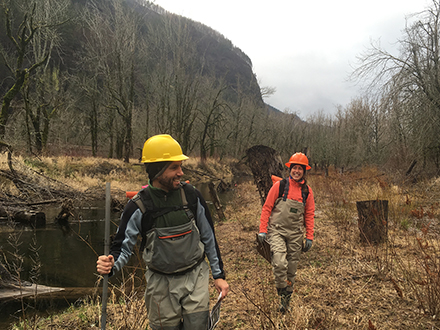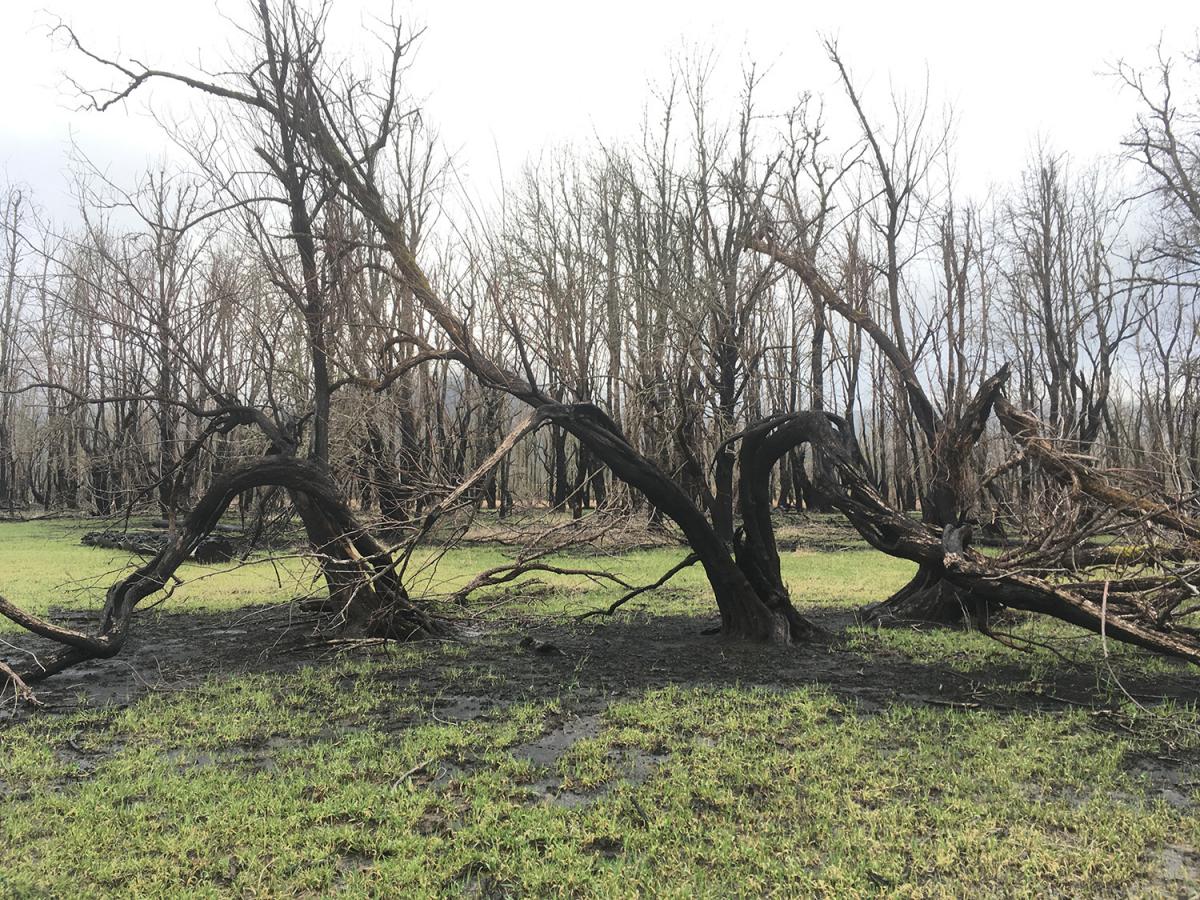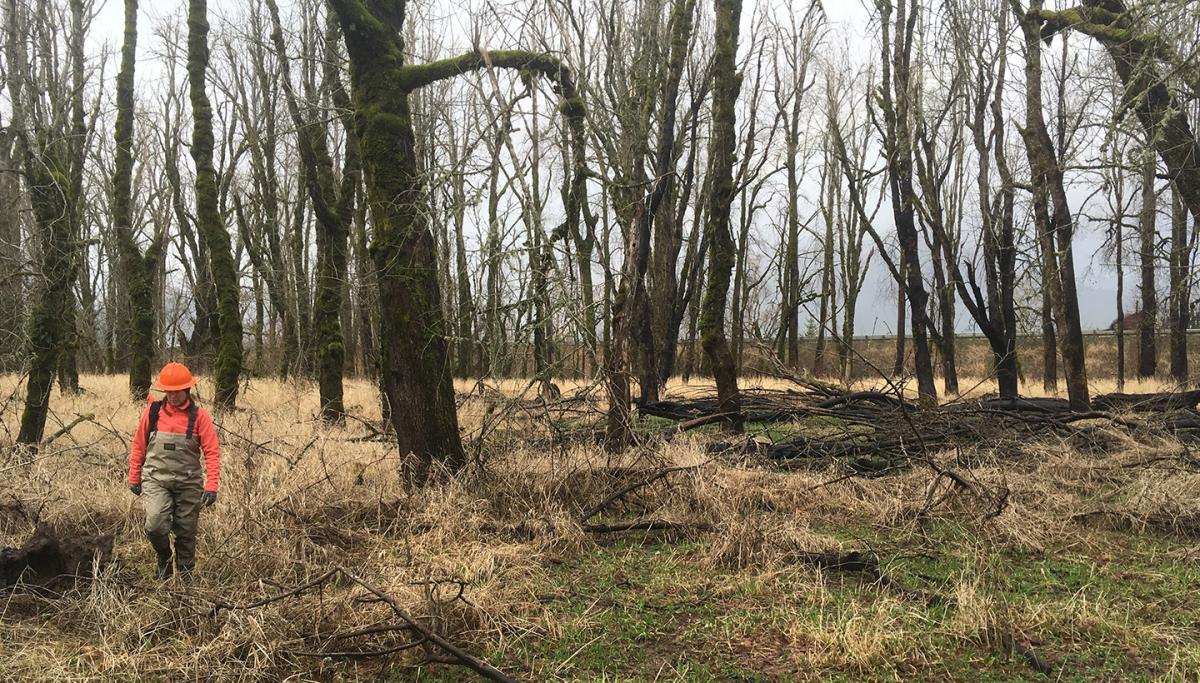
 Our scientists were granted access by the U.S. Forest Service to enter the still-closed Horsetail Wetland Restoration site to investigate the project’s post-fire needs. Wearing hardhats and following the proscribed safety protocol, staff encountered localized areas of small ground fires in the 2013 western project area. Charred branches could be seen here or there, however, this downed wood only appeared to have smoldered and did not spread significantly. As a whole, the 30 acres of riparian plantings installed during the project were not compromised and the staff were heartened to see the plants marching on in height and girth, filling the understory, and continuing to displace invasive vegetation.
Our scientists were granted access by the U.S. Forest Service to enter the still-closed Horsetail Wetland Restoration site to investigate the project’s post-fire needs. Wearing hardhats and following the proscribed safety protocol, staff encountered localized areas of small ground fires in the 2013 western project area. Charred branches could be seen here or there, however, this downed wood only appeared to have smoldered and did not spread significantly. As a whole, the 30 acres of riparian plantings installed during the project were not compromised and the staff were heartened to see the plants marching on in height and girth, filling the understory, and continuing to displace invasive vegetation.
 The eastern half of the Horsetail floodplain was not quite so lucky. While the majority was unscathed, groundfires here ripped through approximately 16 acres of floodplain, fueled by dry grasses, shrubs, and downed branches from the 2016 ice storm. Flames leapt up and climbed the trunks of the riparian overstory as well: Oregon ash and willow trees showed varying intensities of charring up to 20 feet high. Our scientists suspect that any native tree and shrub understory perished in this burn. However, the twiggy tops of the hardwood trees rise above their blackened trunks and appear live and swelling in anticipation of spring. Unfortunately, the dominant invasive at the site, reed canarygrass, shows no ill effects from being burned, and is re-sprouting from its rooted thatch in full. We look forward to continue to work on next steps at the site with USFS and thank them for their permission to access the site and their support for our continued habitat restoration monitoring work.
The eastern half of the Horsetail floodplain was not quite so lucky. While the majority was unscathed, groundfires here ripped through approximately 16 acres of floodplain, fueled by dry grasses, shrubs, and downed branches from the 2016 ice storm. Flames leapt up and climbed the trunks of the riparian overstory as well: Oregon ash and willow trees showed varying intensities of charring up to 20 feet high. Our scientists suspect that any native tree and shrub understory perished in this burn. However, the twiggy tops of the hardwood trees rise above their blackened trunks and appear live and swelling in anticipation of spring. Unfortunately, the dominant invasive at the site, reed canarygrass, shows no ill effects from being burned, and is re-sprouting from its rooted thatch in full. We look forward to continue to work on next steps at the site with USFS and thank them for their permission to access the site and their support for our continued habitat restoration monitoring work.
View a few more photos from our visit to the site on Facebook.
